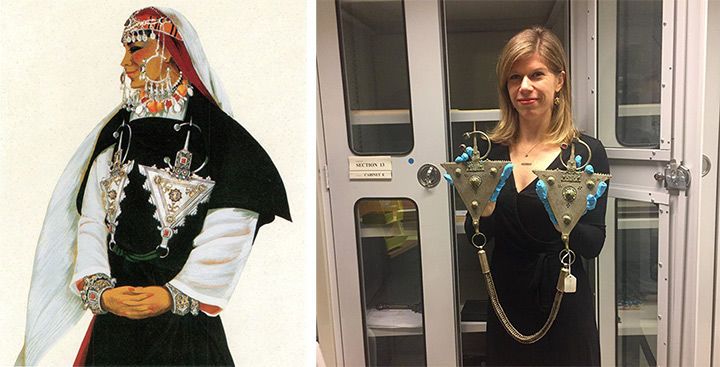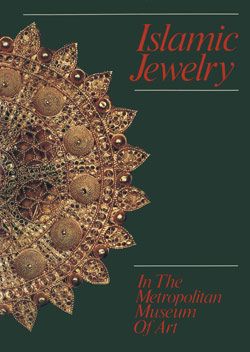Pair of Fibulae
Not on view
A singular feature of North African Berber costume is the use of the fibula, an ancient article of jewelry that holds capes and other garments in place. Fibulae from the Islamic period consist of two triangular endpieces, which are pinned into the clothing, and a chain that connects them. This piece in silver is an imposing example of a relatively rare type; though there are other examples in the Museum's collection of endpieces with garnets set in enameled bosses, this is much larger than any of these, and the massive double loop-in-loop chain is quite remarkable in effect. The focal areas of the fibula proper are made up of short sections of tubing that have been soldered together. These areas are set off by heavy wire and/or thick strips of sheet on edge. The central bosses–their green, blue, and pale yellow enamel compartments separated by applied twisted wires–are affixed by rivets that run through the center of the triangular elements. Though other classical cultures around the Mediterranean used fibulae, the geometric outline and interior design of this piece are unique to Morocco, and can be found in local textiles as well. In both instances, these designs have talismanic properties and symbolize magic, protection, and good luck.
This image cannot be enlarged, viewed at full screen, or downloaded.



